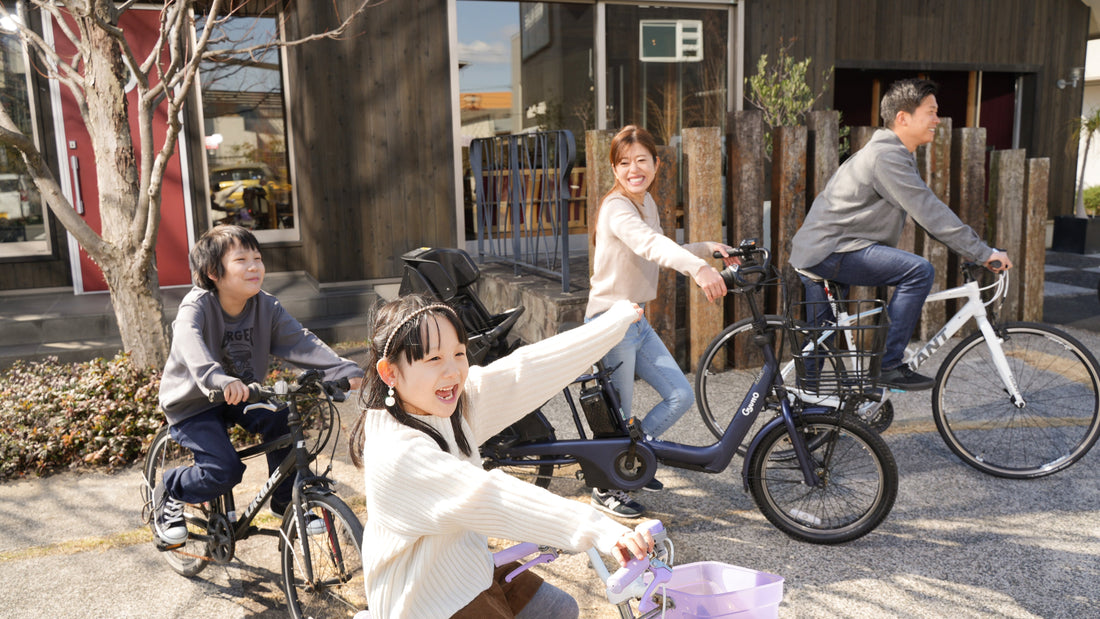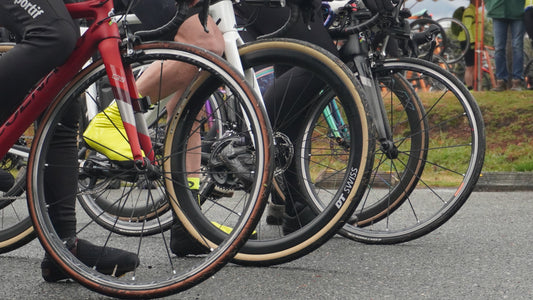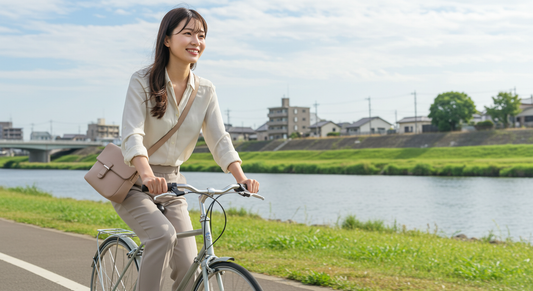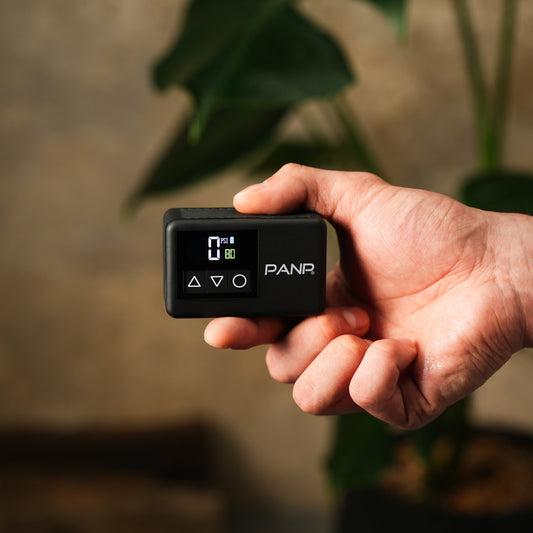A thorough explanation of bicycle air pressure! What's the best way for beginners to inflate their tires?
1. Introduction
Properly inflating your bicycle tires is a basic maintenance routine that everyone, from beginners to experienced riders, should take note of. Maintaining the correct tire pressure improves riding performance and reduces the risk of punctures. It also significantly improves ride comfort, making your daily commute or weekend rides more enjoyable.
Inflating bicycle tires may seem simple at first glance, but there are actually a few key points to keep in mind. This article provides a step-by-step explanation that is easy to understand even for beginners, so please take a look.
We'll also discuss the benefits of maintaining proper tire pressure, including extending tire life, improving fuel economy, and absorbing vibrations from road bumps for a more comfortable ride.
2. Bicycle Pump Basics
2.1 Types of air pumps
There are two types of bicycle pumps: manual and electric. Let's take a closer look at the features and usage of each.
Manual air pump
Manual pumps are the most common and readily available type of pump. They are lightweight and portable, making them easy to use on the go. When using a manual pump, you need to pump while checking the correct air pressure.
Electric air pump
Electric pumps have become increasingly popular recently. Unlike manual pumps, they inflate automatically, eliminating the need for labor. They are especially convenient when you need to inflate multiple bicycle or car tires. Among electric pumps, the PANP RIDE electric pump is highly rated for its ease of use and performance.
Features and how to use the PANP RIDE electric air pump

The PANP RIDE electric pump is lightweight, easy to carry, and cordless. Its digital display lets you check the air pressure, making it easy to use even for beginners. It's simple to use; simply connect it to the valve and it will automatically inflate to the set pressure.
If you are interested in PANP RIDE products, click here
3. Basic knowledge of air pressure
3.1 Units of air pressure
Bicycle air pressure is measured in a few different units, including psi (pounds per square inch), bar, kpa (kilopascals), and kgf/cm² (kilograms per square centimetre). Let's take a closer look at these units.
psi (pounds per square inch)
Psi is a unit of pressure used primarily in the United States that indicates pounds per square inch. Standard tire pressures for bicycle tires range from 30 psi to 120 psi.
bar
The bar is a unit of pressure commonly used in Europe, where 1 bar is equivalent to atmospheric pressure. Bicycle tire pressure is often set between 2 and 8 bar.
kpa (kilopascal)
kPa is a unit used in the International System of Units, where 1 bar is equivalent to 100 kPa. Therefore, bicycle tire pressures are set within the range of 200 kPa to 800 kPa.
kgf/cm² (kilograms per square centimeter)
kgf/cm2 is a unit of pressure used mainly in Asia, where 1 kgf/cm2 is equivalent to 1 bar. Therefore, bicycle tire pressure is set within the range of 2 kgf/cm2 to 8 kgf/cm2.
3.2 How to check the recommended tire pressure

There are a few ways to determine the correct tire pressure. First, it's important to check the recommended tire pressure printed on the side of your tire. This indicates the pressure the tire manufacturer has set it to for optimal driving performance.

The recommended tire pressure is often also listed in the bicycle's instruction manual. If you have purchased a new bicycle, it is important to carefully check the instruction manual and set the appropriate tire pressure.
4. Inflation procedure
4.1 Preparing the pump
Before inflating your tires, make sure you have the necessary tools. Basically, you will need an air pump (manual or electric), an air pressure gauge, and a valve adapter. It is especially important to check the type of valve and prepare the appropriate adapter. There are three types of valves: American, Presta, and British.
British valve
British valves are generally used on city bikes and mamachari bicycles. They have little air leakage and are relatively easy to maintain.

Presta valve
Presta valves are thin valves that are mainly used on road bikes. They are characterized by their ability to withstand high pressure and their light weight.

4.2 How to use a manual air pump
If you are using a manual pump, follow the steps below to inflate the tire.
First, check your tire pressure and set it to the correct pressure.
Next, remove the valve cap and connect the pump to the valve.
Pump until you reach the correct air pressure.
Finally, replace the valve cap and check the air pressure again.
4.3 How to use an electric tire pump
An electric pump is easier than a manual one. Follow the steps below to use it.
First, turn on the electric air pump and set the desired air pressure.
Next, remove the valve cap and connect the electric pump to the valve.
It will automatically inflate the tire until it reaches the set pressure.
Finally, replace the valve cap and check the air pressure again.
How to use the PANP RIDE electric air pump
The PANP RIDE electric air pump is also very easy to use.
First, turn it on and set the desired air pressure on the digital display.
Next, simply connect it to the valve and press the start button to automatically inflate it.
It automatically stops when the set air pressure is reached, making it safe for beginners to use.
5. Air pressure management and maintenance
5.1 The importance of regular tire pressure checks
Regularly checking the air pressure is a very important part of bicycle maintenance. In general, it is recommended to check it about once a week . Be sure to check the air pressure especially before going on a long ride or when the seasons change.
5.2 Effects of low tire pressure
Low tire pressure significantly reduces riding performance: the tire has more contact with the road, which increases resistance and makes pedaling feel heavier. It also increases the risk of punctures and reduces resistance, especially against sharp objects.
5.3 Effects of too much air pressure
On the other hand, if your tires are too high in pressure, you will experience a rougher ride, your tires will be harder, and you will feel every bump in the road. It may also shorten your tire's lifespan, and there is a risk of your tires exploding, especially if they cannot withstand high pressures.
6. Frequently Asked Questions and Solutions
6.1 What to do if air does not enter
If the tire won't pump air, first check that the valve is securely connected. The valve itself may also be faulty, in which case replacing the valve will solve the problem.
6.2 If you are unsure of the correct tire pressure
If you're unsure of the correct pressure, check the recommended pressure on the side of your tire or consult your bike's owner's manual.
6.3 If the electric air pump does not work properly
If your electric pump isn't working properly, first check that the battery is fully charged, and double-check that the air pressure you set is correct, resetting it if necessary.
7. Summary
Maintaining proper tire pressure has a significant impact on bicycle performance. Regular tire pressure checks and maintenance will ensure a comfortable and safe ride. Having the necessary tools and learning how to properly inflate your tires is the first step to enjoying your bike for a long time.
8. References and Links
#AirPump #ElectricAirPump #PANP RIDE #AirPressure #Valve #psi #bar #kpa #kgf/cm2




